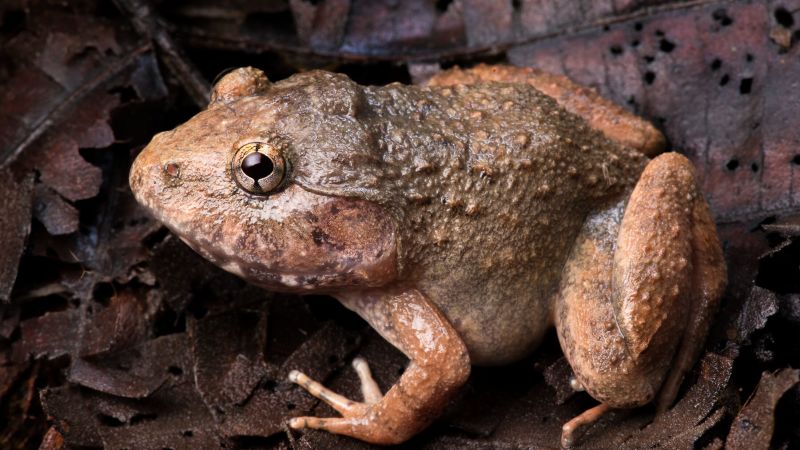**Call to Earth: Spotlight on Virachey National Park**
The Call to Earth initiative is a CNN editorial series dedicated to showcasing the environmental challenges our planet faces, alongside the solutions that can drive positive change and sustainability. Through a partnership with Rolex’s Perpetual Planet Initiative, the series aims to raise awareness and foster education surrounding significant sustainability issues, inspiring collective action towards nurturing our earth.
One remarkable region highlighted in this endeavor is the Annamite Mountains. This mountain chain extends across Laos, Vietnam, and northeast Cambodia and is celebrated for its vibrant biodiversity. Within this spectacular landscape lies Virachey National Park, Cambodia’s largest national park, located in the southwestern part of the Annamites. Despite its designation as a protected area, much of the park remains unexplored and understudied, underscoring the urgent need for comprehensive biodiversity surveys.
The first significant biodiversity survey of Virachey National Park was recently published. This groundbreaking research unveiled the presence of several rare and endangered species, including the Sunda pangolin, the clouded leopard, and the sun bear. Conducted by the conservation organization Fauna & Flora, which refers to the Annamite Mountains as the “Amazon of Asia,” this survey also identified nine previously unrecorded species in Cambodia. Among these notable discoveries were the critically endangered large-antlered muntjac, Sokolov’s glass lizard, and the Vietnamese leaf-toed gecko.
Pablo Sinovas, the country director for Fauna & Flora’s Cambodia program, emphasized the significance of this survey during a virtual interview with CNN. Sinovas expressed his amazement at how little was previously known about the biodiversity in Virachey National Park: “The area had been virtually unexplored and there was almost no information about the biodiversity of Virachey National Park,” he stated. He highlighted the importance of the park as a vital conservation stronghold for many threatened species.
“This park has the potential to provide a solid foundation to ensure these species don’t go extinct,” he added, likening the park to “a Noah’s Ark of wildlife.” However, Virachey is not without threats. The region grapples with issues such as deforestation, habitat fragmentation, forest degradation, and illegal poaching activities. Alarmingly, Cambodia has lost over 30% of its primary forest cover over the last three decades. Despite designated as a national park since 1993, documented activities reveal significant illegal logging operations within its boundaries.
Sinovas hopes that the findings from this biodiversity survey will bolster the management strategies of Virachey and enhance conservation efforts. He remarked that the research “put some of these species on the map,” enabling more focused conservation efforts. The process of documenting and understanding the biodiversity was challenging due to the park’s remoteness. Therefore, the research team employed diverse methodologies over several years while working closely with local Indigenous communities, who, according to Sinovas, “know the forest best.”
These dynamic partnerships proved fruitful, as over 150 camera traps were strategically placed throughout the park, allowing the team to capture elusive species on film. Notably, the large-antlered muntjac, a deer species never documented in Cambodia until 2021, emerged from this effort. Sinovas described the finding of a large mammal considered new to the country as “rare and exciting.”
Moreover, the camera traps served a dual purpose by also exposing human-induced threats, such as the presence of domestic dogs and illegal snaring of wildlife. Some endangered species, including the Asiatic black bear and northern pig-tailed macaque, were recorded with missing limbs, highlighting the urgent need for protective measures.
In addition to camera trapping, the team utilized water sample DNA extraction to identify 161 species, encompassing endangered fish like the dwarf loach and the Asiatic softshell turtle. Specific evaluations for some key species also took place. For instance, the Northern yellow-cheeked crested gibbon population in Virachey was estimated to encompass around 2,000 groups, establishing the area as a vital refuge for this endangered primate.
Sinovas further illuminated the park’s importance in sustaining local livelihoods and acting as a considerable carbon sink in the fight against climate change. “This park sits at the core of one of the largest forests in mainland Southeast Asia,” he explained, underscoring its critical role in climate regulation and biodiversity conservation. He emphasized the necessity for sustainable management of these natural resources, particularly for the Indigenous communities surrounding the park that depend on these ecosystems for their livelihoods.
In summary, the biodiversity survey of Virachey National Park illustrates both a beacon of hope and a call to action. By fostering awareness through initiatives like Call to Earth, the ongoing efforts aim to inspire greater appreciation and concerted efforts to preserve some of the world’s most unique and vulnerable environments. With the collaboration of scientists, indigenous people, and conservationists, there remains hope that the vibrant biodiversity of Virachey can be sustained for future generations to admire and benefit from











